

The Thinnest Washi Paper in the World
|
Washi, or traditional Japanese paper, has gained widespread recognition across the globe for its durability and strength. There are several well-known producers of washi in Japan, one of which is Tosa washi from Kochi prefecture. As one can tell from the name, Tosa washi is named after Tosa province, a former province that is currently Kochi prefecture. Due to an abundance of raw materials, papermaking flourished in Tosa, so much so that it was once Japan’s largest producer of paper.
Tosa washi has a history of over a thousand years, with records of it being used to wrap gifts for the imperial family during the Heian period. It gained a reputation especially during the Edo period, when seven-coloured Tosa washi was created and treated as a specialty product that could be gifted to the shogunate (military government). During the Meiji period, Yoshii Genta, a noteworthy figure who reformed many papermaking techniques, contributed greatly to the manufacturing process of Tosa washi as well as to the improvement of papermaking tools. The papermaking industry in Kochi is closely linked to the Niyodo River, where necessary materials such as paper mulberry, paperbush, gampi and water derive from. In particular, water plays a vital role in making traditional Japanese paper. Pure water with zero impurities is ideal, so manufacturers would usually opt to filter spring or river water. It is also said that the fibres produced from the paper mulberry in the area are longer and thicker in comparison, which results in paper that is more durable. There are several steps in producing Tosa washi. First, the raw materials are soaked, cleaned in water, and then boiled. Alkaline solutions such as soda ash or lime ash are also added, to assist the fibre extraction. Next, the boiled mixture is thoroughly rinsed, before being bleached in the sun or with bleaching liquid. Following this, impurities are to be removed, as these will form spots on the paper or cause faster deterioration. Then, the fibres are rolled into a ball and pounded with a stick. This allows for easier separation of the fibres for later steps. Once the materials are soft enough, they are placed in a small basket filled with water. Here, the fibres are thoroughly separated and thinned down. After which, a starchy substance is mixed with the fibres. At this point, we can make a sheet of paper using either the nagashi-suki (流し漉き papermaking in flowing water) or tame-suki (溜め漉き papermaking using stored water) method. If it is the former, the solution is scooped up in a special screen and shaken back and forth, so that the fibres intertwine in a uniform manner. If it is the latter, water is drained after scooping up the fibres. During this process, one must pay careful attention to make sure the paper has equal thickness. At the end, water is completely drained and the paper is dehydrated in a compressor overnight. The next day, the paper can be dried either under the sun, or via thermal drying. Finally, sheets of paper are trimmed and packaged accordingly. When it comes to Tosa washi, all of them are thin, uniform in composition, and do not tear easily. There are as many as 300 different varieties of it, so that it can be used appropriately in a range of products such as calligraphy paper, lanterns, fusuma (opaque sliding doors), and packaging. Besides that, Tosa washi is also used in the restoration of old paintings and documents. One prominent example is Tosa tengujo-shi, also known as “wings of a mayfly”, which is the world’s thinnest paper at only 0.03mm thick. It has been used during the restoration of numerous artworks and documents in Japan and around the world, including Michelangelo’s ‘The Last Judgment’ in the Sistine Chapel in Vatican City. It is no wonder that Tosa washi is highly regarded around the world. If you wish to get up close and personal with Tosa washi, you learn more about the history of washi and Tosa washi at the Ino-cho Paper Museum, and even try making your own washi! It will certainly be a unique experience for your next trip to Kochi. |
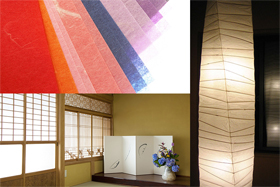 © Web Japan 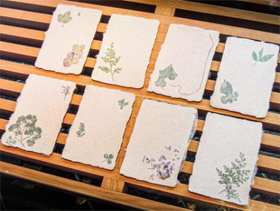 © photo AC 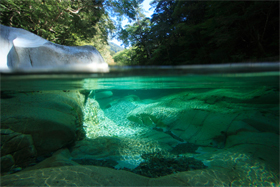 © Natori Kazuhisa, Takahashi Nobuyuki, and pixta 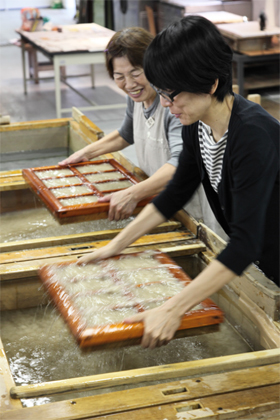 © Natori Kazuhisa, Takahashi Nobuyuki, and pixta 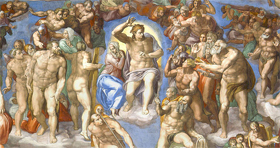 The Last Judgment (© Michelangelo, Public domain, via Wikimedia Commons) 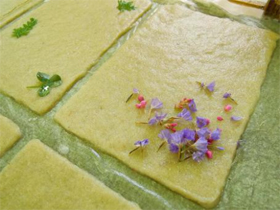 © photo AC |
Resources
|
“The Niyodo River in Kochi”. 2015. niponica. https://web-japan.org/niponica/niponica15/en/feature/feature07.html. “Traditional Washi Paper: From Japan to the World”. 2021. Web Japan. Accessed 17 May. https://web-japan.org/trends/11_tech-life/tec202109_washi-paper.html. “Tosa traditional Japanese paper”. 2022. KOGEI JAPAN. Accessed 17 May. https://kogeijapan.com/locale/en_US/tosawashi/. “TOSA Washi (Papers)”. 2022. The Association for the Promotion of Traditional Craft Industries. Accessed 17 May. https://kougeihin.jp/en/craft/0909/. “About the Museum”. 2022. Ino-cho Paper Museum. Accessed 17 May. https://kamihaku.com/en. “Tosawashi: Handmade Japanese Paper”. 2022. Japanese Traditional Culture Promotion & Development Organization. Accessed 17 May. http://www.jtco.or.jp/en/japanese-crafts/?act=detail&id=307&p=39&c=30. |
|
Japan Creative Centre 4 Nassim Road, Singapore 258372 +65 6737 0434 / jcc@sn.mofa.go.jp https://www.sg.emb-japan.go.jp/JCC/ Nearest parking at Orchard Hotel & Delphi Orchard |
 |